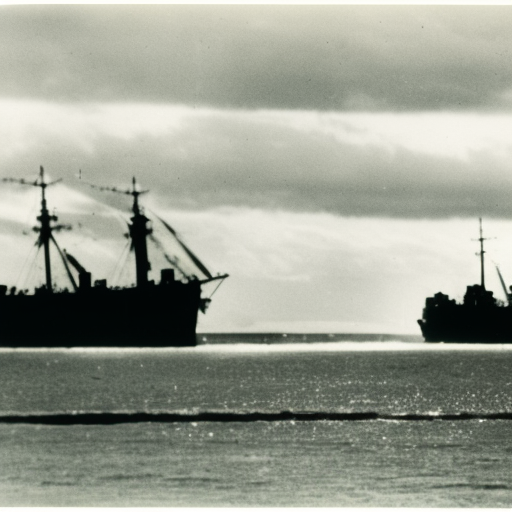Summary: Scuttling of the German fleet at Scapa Flow
In June 1919, following the end of World War I, the German High Seas Fleet was interned in Scapa Flow, a natural harbor in the Orkney Islands, Scotland. The fleet consisted of 74 ships, including battleships, cruisers, and destroyers. Under the terms of the Armistice, Germany was required to disarm and surrender its naval vessels. However, negotiations for the Treaty of Versailles were still ongoing, and the fate of the German fleet remained uncertain.
The Scuttling
On June 21, 1919, Admiral Ludwig von Reuter, the commander of the German fleet, received news that the negotiations at Versailles had failed, and the fleet would likely be divided among the victorious Allied powers. Fearing that his ships would be used against Germany or fall into enemy hands, Reuter ordered the scuttling of the fleet.
In the early morning of June 21, the German sailors opened the seacocks and valves, allowing water to flood the ships. As the fleet began to sink, chaos ensued. British guards attempted to stop the scuttling, but they were overwhelmed by the German sailors. Within a few hours, most of the German ships had sunk, with only a few being saved.
Aftermath
The scuttling of the German fleet at Scapa Flow was a significant blow to the Allies. The loss of the ships was a financial setback, as they were valuable assets. Additionally, the sinking of the fleet created an environmental hazard, as the wrecks posed a threat to navigation and the surrounding ecosystem.
The British government launched an investigation into the incident, holding Admiral von Reuter responsible for the unauthorized scuttling. He was taken into custody and later court-martialed. However, the court acquitted him, as it was determined that he had acted out of a sense of duty to his country.
The salvaging of the sunken ships began shortly after the scuttling. Many of the vessels were eventually raised and scrapped, while others remained at the bottom of Scapa Flow. Over the years, some of the wrecks have become popular diving sites, attracting enthusiasts from around the world.
Legacy
The scuttling of the German fleet at Scapa Flow marked the end of an era. It symbolized the defeat of Germany and the dismantling of its once-mighty navy. The event also highlighted the tensions and uncertainties of the post-war period, as the terms of the peace treaty were still being negotiated.
The incident at Scapa Flow had a lasting impact on naval disarmament. The Treaty of Versailles, signed in 1919, included provisions that limited the size and capabilities of the German navy. It also set a precedent for the scrapping of warships as a means of preventing them from falling into enemy hands.
In conclusion, the scuttling of the German fleet at Scapa Flow was a dramatic event that had significant consequences. It represented the final act of defiance by the German navy and underscored the challenges faced by the Allies in the aftermath of World War I. The incident left a lasting legacy in terms of naval disarmament and the preservation of peace.












